#Howard Phillips Lovecraft Necronomicon
Explore tagged Tumblr posts
Text
Do you think Lovecraft would be genuinely terrified if a dog or a horse would act uneasy around someone?
#howard phillips lovecraft#h p lovecraft#the cthulu mythos#Necronomicon#classic literature#bookblr#readingblr#books and reading
7 notes
·
View notes
Text

Facsimile of an original cover by H. P. Lovecraft
#h. p. lovecraft#lovecraft#hp lovecraft#h p lovecraft#h.p. lovecraft#necronomicon press#the annual report on the science of astronomy 1904#the annual report on the science of astronomy and it's progress during 1903#softcover#2010s#book#books#book cover#book covers#octavo#august derleth papers#A FACSIMILE REPRODUCTION OF THE ANNUAL REPORT ON THE SCIENCE OF ASTRONOMY 1904#1900s#howard phillips lovecraft
3 notes
·
View notes
Text
List of Cthulhu Mythos books

Many fictional works of arcane literature appear in H. P. Lovecraft's cycle of interconnected works often known as the Cthulhu Mythos. The main literary purpose of these works is to explain how characters within the tales come by occult or esoterica (knowledge that is unknown to the general populace). However, in some cases the works themselves serve as an important plot device. Thus, in Robert Bloch's tale "The Shambler from the Stars", a weird fiction writer seals his doom by casting a spell from the arcane book De Vermis Mysteriis. Another purpose of these tomes was to give members of the Lovecraft Circle a means to pay homage to one another. Consequently, Clark Ashton Smith used Lovecraft's Necronomicon (his most prominent creation) in Smith's tale "Ubbo-Sathla". Likewise, Lovecraft used Robert E. Howard's Nameless Cults in his tale "Out of the Aeons". Thereafter, these texts and others appear in the works of numerous other Mythos authors (some of whom have added their own grimoires to the literary arcana), including August Derleth, Lin Carter, Brian Lumley, Jonathan L. Howard, and Ramsey Campbell.
list-List of Cthulhu Mythos books - Wikipedia
12 notes
·
View notes
Text
"- all life is only a set of pictures in the brain, among which there is no difference betwixt those born of real things and those born of inward dreamings, and no cause to value the one above the other."
H. P. Lovecraft
#h. p. lovecraft#lovecraft#quotes#the necronomicon#the silver key#if it's real to you then it's real#howard phillips lovecraft
4 notes
·
View notes
Text
I think the Deans are fucking Lovecraftian gods
If you're a regular reader of my nonsense, you may have noticed that on more than one occasion I've referred to the Deans as "Nyarlathotep Tumblrsexymen": no, I didn't have a stroke on the keyboard, this is a reference to an entity that appears in the stories of Howard Phillip Lovecraft. A writer who is widely known because there were even people who thought that the Necronomicon, a fictional text part of his work, actually existed (and because he was such a recalcitrant racist that it has become a meme about how extremely racist he was).
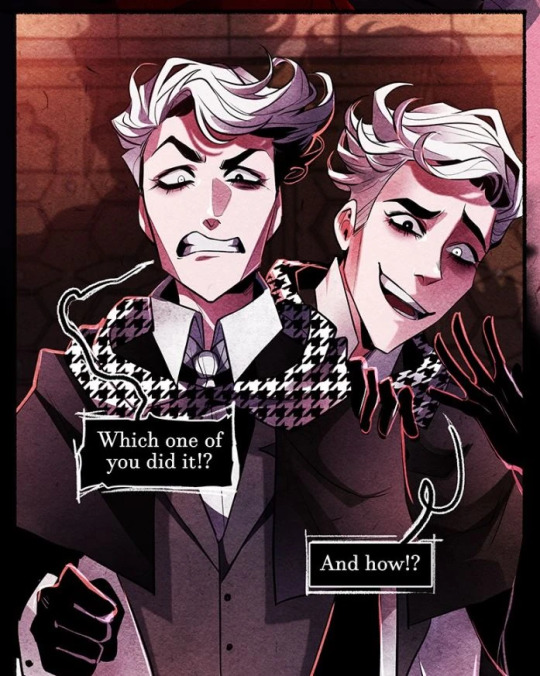
And since I'm still going through my pile of papers on Gothic fiction, let me take a moment to talk about Lovecraft's work, why I have reason to believe that the Deans have something in common with these creatures, and what that might mean for the development of Nevermore.
A Little About Lovecraft's Gods
To understand a little bit about the kind of creatures we are talking about, I have to stop at a brief (seriously brief) description of cosmic horror: This is a type of horror that takes elements from the scientific publications of the time (which makes it close to science fiction) to give it verisimilitude, it has at its core a deep nihilism, the breaking of scientific canons, the fragility of the human mind and societies contrasted with the vastness of the universe, an enormous fear of "the unknown" for the white man (fed by his racist paranoia), and seasoned with tentacles and creatures that remind us of sea creatures, because Lovecraft had an enormous fear of the sea.
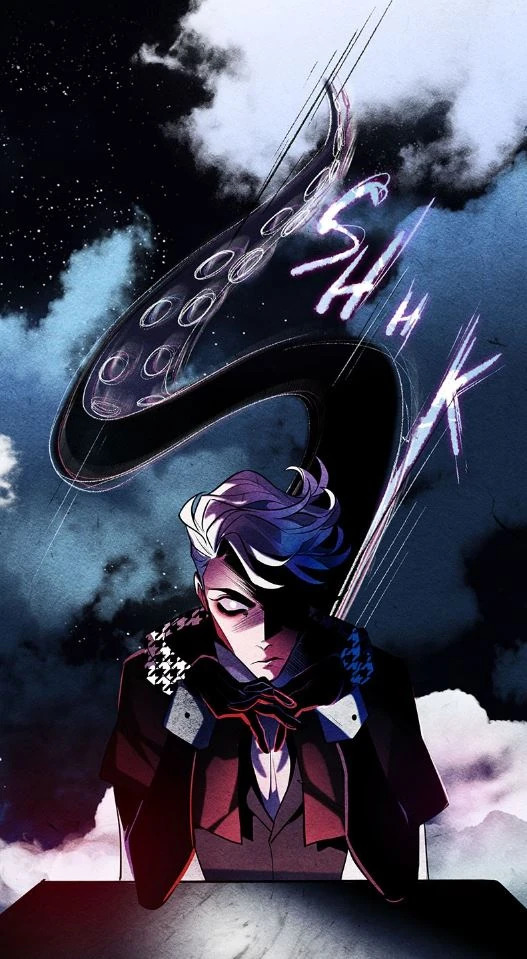
The gods in these stories represent, on a symbolic level, the vastness of the universe, the terror of the unknown, and the fragility of the human mind: they are entities older than time itself, contact with them tends to shatter the mind, and humanity must be very, very grateful that most of them are locked away or incapacitated in some way. Also, the way to access them is through very specific rituals that have been lost over time, so thankfully they're not very easy to contact either.
Similarities with the Deans
Let's start with the most obvious: the Deans, like the Lovecraftian gods, seem to operate in their own plane of existence, beyond what humans understand as "life" and "death": Nevermore is a kind of limbo, but we know, thanks to the Raven, that these guys came from another place and had enough power to kick the crap out of psychopomps without any problem.
However, just like Lovecraft's gods, these enormous powers don't make them able to do whatever they want; as I said, these entities are usually locked up or incapacitated in some way and can only have contact with humans under certain circumstances (like being summoned in rituals), and getting out of their prisons usually requires vague events like astral alignments that are completely out of their control.
The Deans, like Lovecraft's gods, seem to be subject to rules that are above them, and while they can bend them a bit to achieve their goals, it's not like they can do much about it.
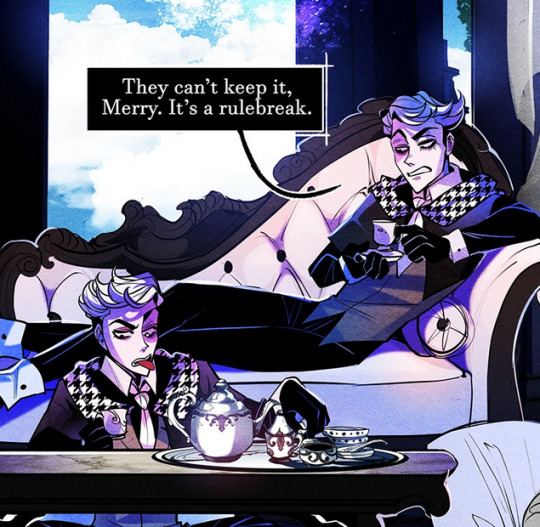
Another thing they have in common with Lovecraft's gods is the ability to create servants that function as extensions of them to fulfill their designs. There are many creatures that follow this line in the stories that speak of The Myths, but the best known are the Shoggoth that appear in the novel At the Mountains of Madness: artificial beings created by the Old Ones to rule the Earth, described as amphibious, amorphous masses similar to amoebas.
Although the Deans prefer their minions in the form of animated dolls. I suspect this decision is based on the story The Sandman by E.T.A. Hoffman. I have no proof, but no doubt.
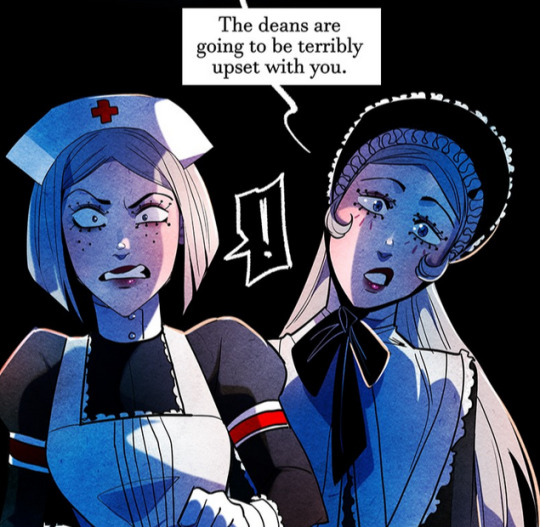
Now for the joke that brings this essay to life: the creature in Lovecraft's universe that most resembles the Deans is a being called Nyarlathotep. This creature belongs to the category of "Other Gods" (not the old ones like Cthulhu) and gets very nice nicknames like "Crawling Chaos".
Nyarlathotep is a being who enjoys causing chaos, death and madness wherever they go. They can communicate with humans, which they use to psychologically torture them and make them lose their minds. Something they seem to enjoy quite a bit. In the same way that the Deans view this sadistic battle royale, they have set up a fun game.
Then there is the ability to manipulate and alter the human mind, which is called into question in stories like Nyarlathotep and The Rats in the Walls (where it is apparently Nyarlathotep who messes with the protagonist's mind so that he tries to kill his friend).
This is something we've seen manifest in Nevermore in two different ways: the ability to trigger or unlock memories.
And the ability to change them. While we can't know if what was shown to Annabel is 100% real, we do know that showing her the end of her life caused a permanent change in the way she retrieves her memories: from the end backwards. If this memory is somehow altered, we also know that the Deans are capable of photoshopping people's memories.
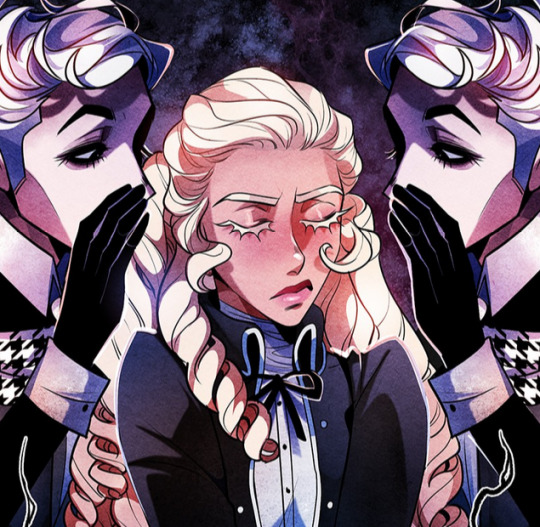
Finally, Nyarlathotep has the ability to shape-shift, which allows them to appear as humanoids in several stories, such as The Oniric Quest of the Unknown Kadath or Dreams in the Witch's House. His human form is considered "unnatural", "strange" and "disturbing" by those who see it (remember that Lovecraft was extremely racist, so he always presents himself as a black man). As a pharaoh in the Randolph Carter cycle and as a charcoal humanoid figure in the second story cited).
Here, the human form of whatever the Deans are is also quite atypical: not only are they ridiculously tall (7 feet), they have heterochromia with a white-colored eye (which I would venture to say may be a reference to the cataract eye mentioned in the story "The Tell-Tale Heart" by Edgar Allan Poe), and their synchronized movements are amusing on paper, but possibly strange to look at for the characters.
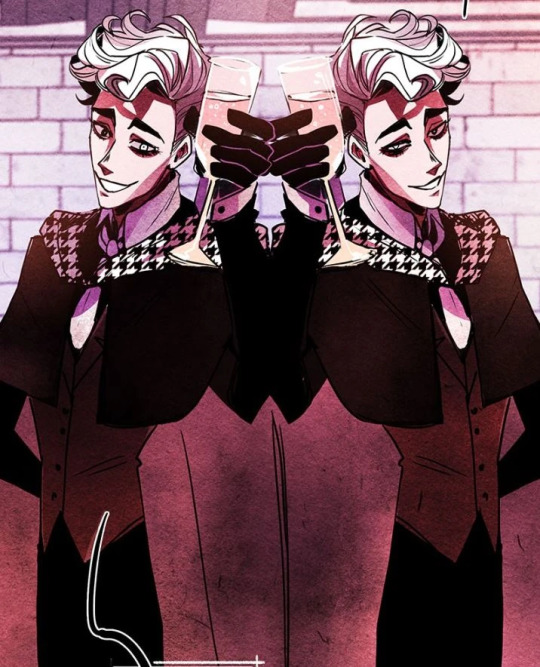
Otherwise, there are two other entities in Lovecraft's universe whose descriptions can be loosely associated with the Deans: Yogg-Sothoth and Azathoth. Both are beings of dual nature.
The former is an entity associated with omniscience and appears in stories such as The Strange Case of Charles Dexter Ward and The Dunwich Horror. and is described as "the key and the door".
Azathoth represents omnipotence, is the center of the universe, and is described as "the beginning and the end" or "the alpha and the omega.
Implications for the comic
The fact that the Deans have elements in common with Nyarlathotep brings up an interesting point: although Nyarlathotep has far greater freedom than other beings, they is a servant of Azathoth. In other words, them powers are subservient to a more powerful being whose plans they must follow. They may amuse themselves in the process, but they is still essentially a butler.
On the other hand, the Azathoth connection might be vague, since this creature is a lobotomized god, so he can't do much. But if the reference is to Yogg-Sothoth, it gets a little more interesting, because that entity is the one who is supposed to release the original gods when the time is right.
And I don't know about you, but these references have me wondering if the Deans are working for something much more messed up than they are, or if they're using the souls of the students to bring back something much more sinister.
#nevermore webtoon#lovecraft mythos#Lovecraft Reference#I don't trust these bastards at all#Seikca#if you are reading this#I want you to know that it is your fault lol
107 notes
·
View notes
Text

“The surface of the planet today is covered in a chain-linked mesh of associations that join together to form a man-made network of irregular density.
Through this network, society's lifeblood circulates. The transport of people, of merchandise, of commodities; multiple transactions, sales orders, purchase orders, bits of information, all pass each other by; there are also other, more strictly intellectual or affective exchanges that occur. This incessant flux bewilders humanity, engrossed as it tends to be by the cadaverous leaps and bounds of its own activities.
But in a few spots where the network's links are weakly woven, strange entities may allow a seeker, one who "thirsts for knowledge," to discern their existence. In every place where human activity is interrupted, where there is a blank on the map, these ancient gods crouch, huddled, waiting to take back their rightful place.
As in the terrifying interior Arabian desert, the Rub-al-Khalid, from whence a Mohammedan poet named Abdul Al-Hazred was returning around the year 731 after ten years of utter solitude. Having grown indifferent to the practices of Islam, he devoted the year that followed to writing an impious and blasphemous book, the repugnant Necronomicon (several copies of which escaped the pyre and traversed the ages) before being devoured by invisible monsters in broad daylight at the Damascus market square.
As in the unexplored plains of Northern Tibet, where degenerate Tcho-Tchos lope around in adoration of unnameable deities they qualify as "the Great Old Ones."
And as in the huge expanses of the South Pacific, where the paradoxical trails of unexpected volcanic convulsions at times produce utterly inhuman sculptures and geometry which the abject and depraved natives of the Tuamotu archipelago worship, crawling forward on their upper bodies.
At the intersections of these channels of communication, man has erected giant, ugly metropolises where each person, isolated in an anonymous apartment, in a building identical to the others, believes absolutely that he is the center of the world and the measure of all things. But beneath the warrens of these burrowing insects, very ancient and very powerful creatures are slowly awakening from their slumber. During the Carboniferous age, during the Triassic and the Permian ages, they were here already; they have heard the roars of the very first mammals and will know the howls of agony of the very last.
Howard Phillips Lovecraft was not a theoretician. Jacques Bergier clearly understood that, by introducing materialism into the heart of fear and fantasy, HPL created a new genre. It is no longer a question of believing or not believing, as in certain vampire or werewolf tales; there is no possible reinterpretation, there is no escape. There exists no horror less psychological, less debatable.” - Michel Houellebecq, ‘H. P. Lovecraft: Against the World, Against Life’ (1991) [p. 57 - 59]
13 notes
·
View notes
Text
THE NECRONOMICON in H. P. LOVECRAFT.
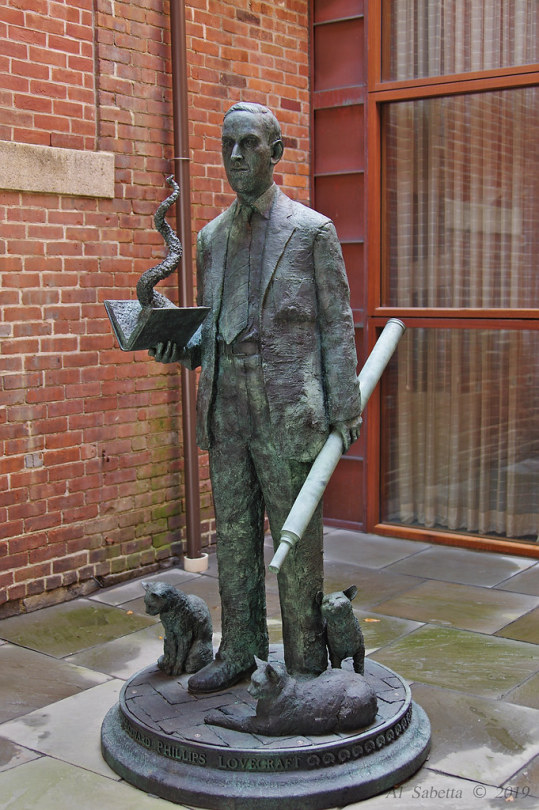
H.P. Lovecraft statue in Providence, RI sculpted by artist Gage Prentiss. Photo taken by David Lepage (OLYMPUS DIGITAL CAMERA) shortly after the statue was unveiled online. A place has yet to be determined for the permanent installation of the statue in Providence.
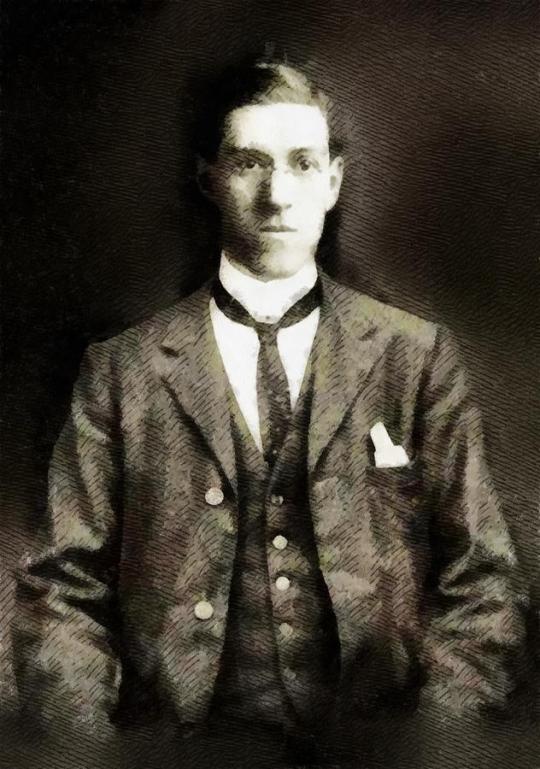
Who is this scary dude that seems to have come out of the New England witchery subterranean hell. He is certainly crafty and don't know about him being a lover, particularly in his writings, well, I'll leave you to decide.
I am going to deal with H. P. Lovecraft "Necronomicon", a fictional grimoire (meaning a textbook of magic) which has been featured it in many of his stories. So wish me good luck with that.
About this New-Englander Howard Phillips Lovecraft (August 20, 1890 – March 15, 1937), he was an American writer of weird, science, fantasy, and horror fiction. He is best known for his creation of the Cthulhu Mythos. I would suggest further reading at H. P. Lovecraft - Wikipedia
youtube
(679VID1) https://youtu.be/Ll67gXlC6qE
The Necronomicon, also referred to as the Book of the Dead, or under a purported original Arabic title of Kitab al-Azif, is a fictional grimoire (textbook of magic) appearing in stories by the horror writer H. P. Lovecraft and his followers. It was first mentioned in Lovecraft's 1924 short story "The Hound", written in 1922, though its purported author, the "Mad Arab" Abdul Alhazred, had been quoted a year earlier in Lovecraft's "The Nameless City". Among other things, the work contains an account of the Old Ones, their history, and the means for summoning them.
READ MORE: Necronomicon - Wikipedia

To make a long story short, I've included the following movie. (IMdB rating 5'8)
Necronomicon (also called H. P. Lovecraft's Necronomicon, Necronomicon: Book of the Dead or Necronomicon: To Hell and Back) is a 1993 French-American anthology horror film. It features three distinct segments and a wraparound directed by Brian Yuzna, Christophe Gans and Shusuke Kaneko and written by Gans, Yuzna, Brent V. Friedman and Kazunori Itō. The extensive special makeup and animatronic effects were supervised by Tom Savini[1] and were created by John Carl Buechler, Christopher Nelson and Screaming Mad George.
The three stories are based on three works by famed horror writer H. P. Lovecraft: "The Drowned" has light similarities to aspects of the short story "The Rats in the Walls", "The Cold" is based on the short story "Cool Air", and "Whispers" is based on the novella The Whisperer in Darkness. Read more: Necronomicon (film) - Wikipedia Necronomicon: Book of Dead (1993) - IMDb
(679VID2) https://ok.ru/video/1677493209656
REF: 679 NOTES
History of the Necronomicon - Wikipedia
Necronomicon - Wikipedia
Necronomicon (film) - Wikipedia
THE NECROMOMICON - An immersive film and audio book experience.
Altrusian Grace Media presents THE NECRONOMICON - an immersive film and audio book experience. Inspired by and referenced in the literary works of H. P. Lovecraft, the Necronomicon is the infamous Book of the Dead. The Necronomicon, also referred to as the Book of the Dead, or under a purported original Arabic title of Kitab al-Azif, is a fictional grimoire (textbook of magic) appearing in stories by the horror writer H. P. Lovecraft and his followers. It was first mentioned in Lovecraft's 1924 short story "The Hound", written in 1922, though its purported author, the "Mad Arab" Abdul Alhazred, had been quoted a year earlier in Lovecraft's "The Nameless City". Among other things, the work contains an account of the Old Ones, their history, and the means for summoning them. Download the audio version at https://altrusiangrace.bandcamp.com/a... Narrated by Matthew Schmitz
youtube
(679vid3) https://youtu.be/RGi4ACLePGw THE NECRONOMICON - an immersive film and audio book experience
THE FILM WITH SPANISH SUBTITLES...
(679vid4) https://ok.ru/video/85548272194 Necronomicon: Book of the Dead (1993) - VIAJE A LO INESPERADO
See the book in PDF...
Al-Azif-Necronomicon.pdf (holybooks.com)
2 notes
·
View notes
Text
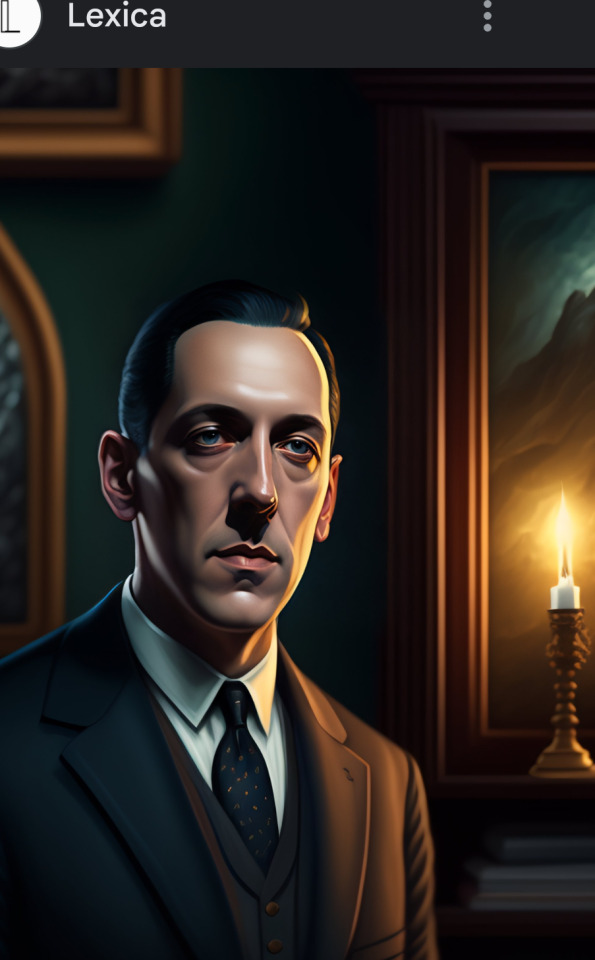
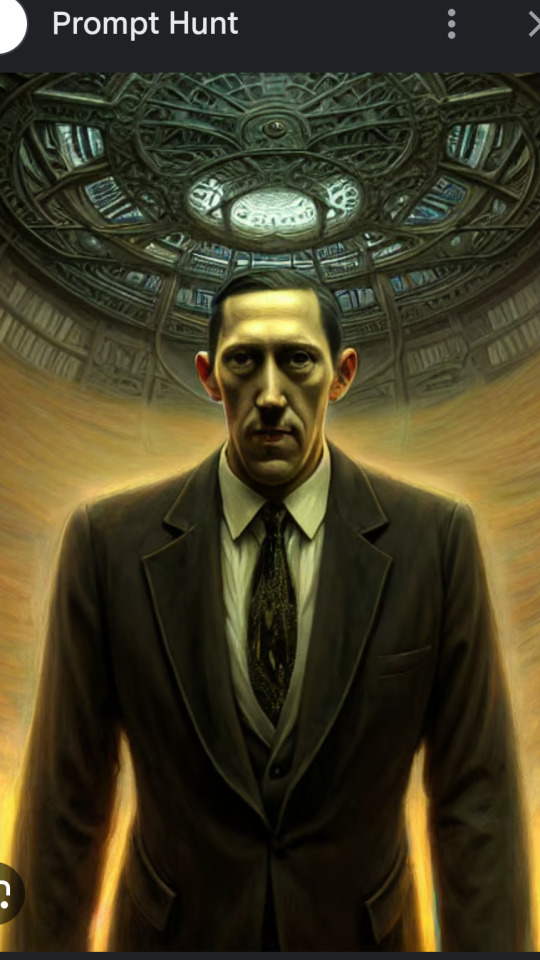

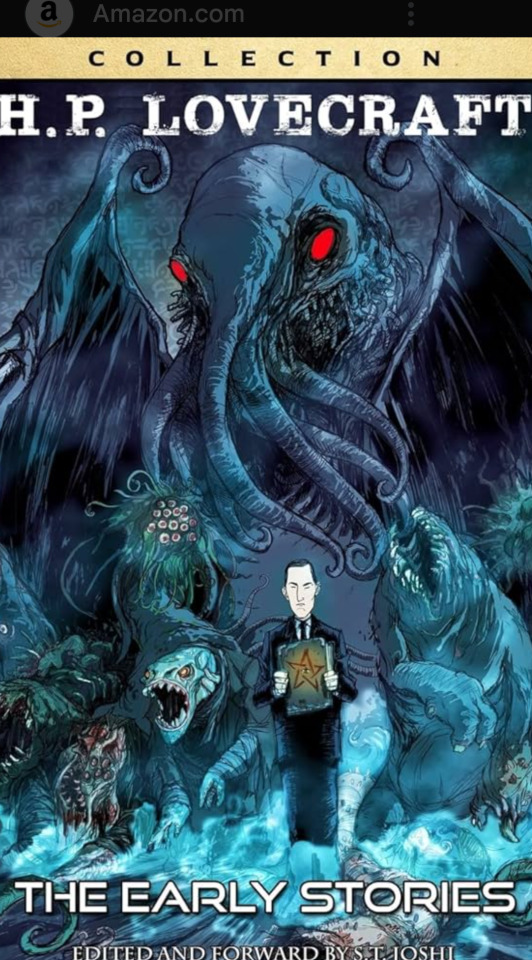
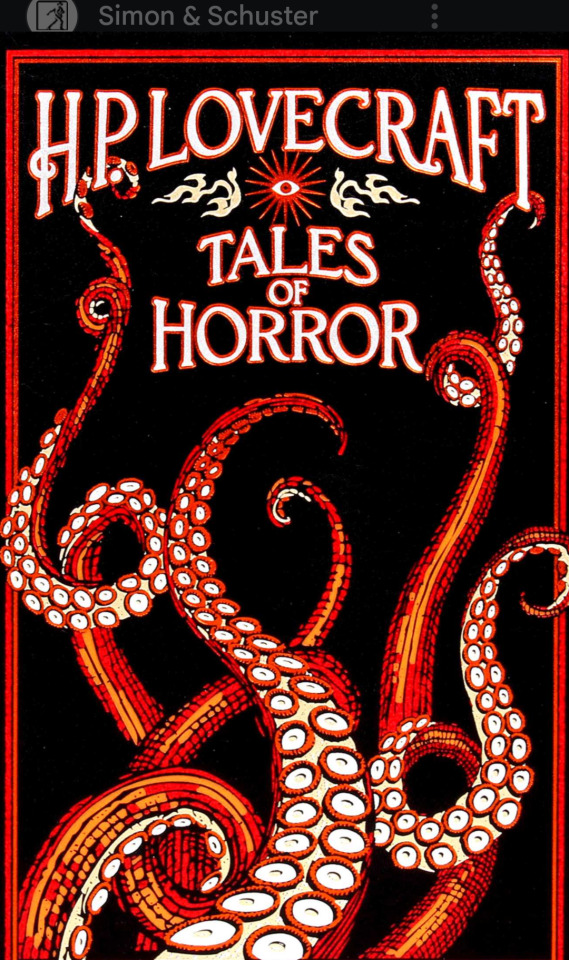
Pics:
1 & 2. Modern AI images which need a little more time rendering the Hoary Olde Scribbler.
3. The real Ani-maniac? I mean he's wielding the dark magic of the Mad Arab's dreaded Necronomicon!!
4 & 5. Covers to 2 collections of Love- craft's best stories & early short tales.
1914: Output.
Intro: "Ad Criticos" is a collection, taken from HPL's letters, of 4 satirical poems.
These had been sent to the Argosy magazine during the 'Jackson War', which started in 1913.
It's mostly good natured ribbing but, with Howard, you get a lot of history & name dropping!
Work: Right after mentioning Jackson, Lovecraft focuses on the "Ingenious Russell, I forgive (your) slur, since... such clever lines... occur with true Pierian¹ heat inflamed."
John Russell will be mentioned more than anybody else - always showing HPL's high opinion of this 'enemy' writer.
Now, Howard defends his use of old English words.
"My store of knowledge (I) might parade (yet) my words are not beyond reach."
Then, we dive into English history.
"In Charles the 2nd's² vulgar age, the gross Wycherley³ & Dryden⁴ soiled the stage."
Most of the 2nd 'Book' touches upon a lot of Greek mythology.
But, by its end, Lovecraft's favorite southern Civil War soldier⁵ is turned into a deathless martyr - or some- thing like that.
"Louder bawl the... Boeotian⁶ band, Acid quills, fresh... from Cupid's⁷ wing, At me the Myrmidons⁸ of Venus⁹ sling... Amazons¹⁰ in... fury charge!
Book 3 starts with 1 mythological mention, before dropping some poetic names!!
"Beat their wings in Heliconian¹¹ song."
Quickly followed by "Russell, like Butler¹²... schools the times." And, "Points with logic's art, At... Avon's Bard¹³."
HPL then mentions himself, twice - in roundabout ways.
"Were I the Hudibras¹⁴ of our age."
And, "(Oh!) Heavenly Muse¹⁵, your latest pupil see(s), Verse modeled after Pope's¹⁶ (& mine)!!"
This section ends with "Sense, like Browning's¹⁷... a bit obscure. Detested Lovecraft... fierce."
Book 4 starts with poetic nitpicking.
"In true trochaic¹⁸ rage the bard begins, When - Lo! - An odd iambus¹⁹ intervenes."
It all ends with the person who has a decision to make.
"(And) soon a dactyl²⁰ swells the shapeless swarm²¹... When scribes... contend, The Editor alone the fray can end."
Best John Russell mention, "Well turned lines, with... venom writ, counts my failings to display his wit."
Best Howard mention, "The crusty bachelor will rant no more..."
Criticism: Phillip Ellis stated, "(This) is (HPL's) 1st genuine example of his (poetic) ability... (Very few) of his earlier (attempts) have (much) merit."
"Ad Criticos" is of reasonable length... to more fully develop the satire in the (work's) subject... The 4 pieces... combine to create a (poem) that lessens the impact of "On Whitman" & "Providence in 2000 AD."
Sadly, "Ad Criticos" has received little other critical attention - mostly from S.T. Joshi.
Notes:
1. Pierian means of or pertaining to the Muses, Goddesses of Divine Inspiration.
The word comes from the Mt. Pierus area, in Macedonia - homeland of Alexander the Great!
The Muses were worshipped there, because of a spring that granted drinkers literary & artistic skills!
2. This "Merry Monarch" was King of Great Britain & Ireland. His political savvy guided his nation thru religious unrest, the Black Death & more.
His soldiers took New Amsterdam from the Dutch & called it NYC.
But, the Great Plague hit England, killing over 60,000 people.
It was Charles that granted Carolina & R.I. their colonial charters.
3. William Wycherley was a poet & playwright known for his comedies "Country Wife" & "Plain Dealer" which are full of wit, humor & good spirits.
"Wife" reflected aristocratic & anti- Puritan sentiments. It's also full of explicit sexual jokes!
"Dealer" was actually condemned for its obscenities!! But, poets John Dry- den & John Dennis praised it highly."
Wycherley had no title or wealth yet, he ended up sharing King Charles 2's mistresses!!
4. John Dryden was an English poet, literary critic, translator & playwright.
He was England's 1st Poet Laureate & dominated satiric literature during the late 1600s.
5. This was "Stonewall" Jackson, who - in HPL's estimation - "died a hero²³ in (a) glorious cause²⁴."
A man who's "lost, but (is of a) death- less fame. (Such) that lesser men should (not) bear his name!"
6. Of or about the Greek region of Boeotia, whose capital was Thebes - now Thiva.
Thebes was politically strong but, had few good harbors. Still, they're 1 of the oldest inhabited cities on Earth!
The Athenians called these folk "dull & stupid!" Yet, these major rivals ended teamed up against the invading Phillip the 2nd.
In the end, the father of Alexander the Great beat both nations. And, Phillip's son would later destroy Thebes...
7. Cupid was the Roman God of sexual love, affection & erotic desire. This cherubic boy was son of Mercury, messenger God & Venus, Goddess of love.
Anyone (even other Gods) who was shot by 1 of his arrows, would be filled with uncontrollable desire!!
8. Now, any "follower of a powerful person." Especially, an unscrupulous & unquestioning lackey.
They were descendants of Zeus, King of the Greek Gods & Eurymedusa, a seduced by Zeus - in the 'disguise' of an ant!!
They lived in Thessaly, Greece & their leader was Achilles, the great warrior of the Trojan War!
9. Venus, Roman Goddess of love. Also, the bringer of prosperity & good fortune.
She's an ancestor of the Romans, thru Aeneas, her Trojan son by Anchises.
Weird Shit: Venus was born of 'sea foam!' A 'substance' that originated from when Cronus castrated Uranus & threw his dad's penis into the sea!!
10. Amazons were a nation of fierce warrior women that supposedly lived Northeast of Greece, in the Black Sea area.
They were daughters of Ares, the Greek God of War & Harmonia, a demigoddess.
These ladies thought that marriage was a slave sentence! Yet, they mated once a year with the neighboring Gargareans.
Weird Bit: Then, their worst fear came true! The Amazons & Scythians inter- married, founding the Sauromations!!
11. Heliconian means of or pertaining to Mt. Helicon, Greece - which was home to Apollo & the Muses.
12. Samuel Butler was an English poet, critic & satirist who wrote the utopian novel of "Erewhon", "The Way of All Flesh" & "Hudibras", a long satirical poem.
"Hudibras's" story reminds readers of Edmund Spencer's "Faerie Queen" & is thought to be a deliberate imitation!
13. Avon's Bard - Come on folks, who can forget William Shakespeare's nick- name?!! Stratford-on-Aven was this poet/playwright's birthplace!
But, there's a "Bard of Avon" children's book for ages 7+. It contains words that Shakespeare made up!
Like: leap frog, tongue tied & laughing stock, etc...
In the U.K., Shakespeare is better known as "the Swan of Avon."
14. Hudibras is a 'vigorous' satiric poem, written in a mock heroic style.
Its simple plot has the knight named Hudibras being regularly defeated - by women.
So, he comes to the conclusion that women are superior to men...
This 'unique' name is taken straight out of Spencer's "Faerie Queen" - where it's spelled Huddibras.
15. A Muse is one out of nine Greek Goddesses of expressive inspiration.
They were daughters of Mnemosyne, Goddess of Memory & Zeus, King of mack daddies!!
16. Alexander Pope was an English poet, satirist, translator & essayist.
Known for "Rape of the Lock", "The Dunciad" & "Essay on Criticism."
Supported himself with subscription fees for his translations of Homer's works.
17. Robert Browning was an English poet & playwright of the Victorian Era.
He created the Pied Piper but, is best known for his dramatic monologues & psychological 'portraits.'
Browning's best work is the 12-book series "The Ring & the Book", the story of a Roman murder trial.
This writer believed that all women should fight for their freedoms - even if they should die for them...
18. Ad Criticos is Latin for "To the Critics." In Spanish, they have the related meanings of "Abusers" or "Scoffers."
Heh.
19. Trochaic, in poetry, is a "falling" rhythm made up of 1 stressed syllable, followed by 1 unstressed sound that's cascading down.
20. Iambus, in poesy, is 1 weak sound followed by 1 strong syllable that's rising up in timbre.
21. Dactyl, in poetry, is 1 strong sound followed by 2 unstressed syllables.
The name is from the Greek Dactyloi, a male race (unholy Amazons?) that's associated with the Great Mother Earth.
22. This "shapeless swarm" wouldn't happen to be shoggoths - would they?!!
Probably not.
But, I find it interesting that these words will soon bear a newer, more Lovecraftian meaning...
23. I don't think so, dude.
"Stonewall" was shot by his own troops!!
He had his left arm amputated & it was buried separately from the rest of his body!
Then, eight days later, "Stonewall" died of a combination of three things: shock, a chest injury & pneumonia.
His last words were "Let's cross the river & rest under the trees..."
"Stonewall's" deathbed was a farm office some 30 miles from his own battlefield troops.
I'd hardly call that heroic...
24. To keep people in slavery is never any sort of 'glorious' cause. Otherwise, the whites wouldn't mind being slaves themselves...
And, the hogwash about "state's rights" is a later excuse.
Southerners knew they'd not make as much money without their unpayed workers...
As is usual, greed runs the world.
1 note
·
View note
Text
“Se la leggenda del Necronomicon continua a crescere in questo modo, la gente finirà per crederci davvero, ed accuserà me di falso per aver affermato di averlo inventato io!”
#leggere#libro#libri#libromania#book#books & libraries#citazione libro#necronomicon#necronomidol#lovecraft#lovecrafian
0 notes
Text
For no other reason than this initial post being a lot of fun, I'm going in on some more classic horror characters and how I think "Leslifying" them into this theory might play out. I also want to address some of the Easter Eggs in the movie and the fact that Eugene, Leslie Mancuso's mentor, is, and I swear this is true, the director and a few others swear by it, meant to be Billy from the original Black Christmas (1974) and also the guy from The Toolbox Murders (1978) who dun went and did the murderings in that. And also his wife is implied to be one of his survivor girls.
With that out of the way: Let it be said that I'm just doing ones I personally like and know enough about to jam into this. I can't promise I'll get everything, but I'm throwing in what feels natural to this theory. I'm keeping some of the crazier ones at arm's length because NGL: I can't figure out what The Leprechaun would be like in this universe. He's just too out there as a concept. Same with the Killer Klowns from Outer Space. These are one-off killers, slashers, dynamic, singular antagonists or less bizarre groupings. Okay? Okay. 1. The Cenobites

Now I know what I just said about bizarre groupings and things, but A. There is a Lament Configuration in Eugene's house in the movie. They're using it like a damn paperweight. B. I can actually think of a pretty logical way for them to fit. What is it? They don't exist. Consider that you could theoretically buy a supposed "Necronomicon" online these days, and even plausibly back in 2006. Be that the one from Evil Dead for replicas' sake or the one supposedly written about in the works of Howard Phillips Lovecraft. I think the Hellraiser movies, or at least the novel the first one or two were based on, "The Hellbound Heart" written by Clive Barker exist in the universe of BTM. The Lament Configuration in Eugene's house is not a functional magical object. It's just a piece of merchandise related to those films/that book. It's the same as having a Freddy glove or a Morpher from Power Rangers. However, this selection makes sense when you remember Cenobites are all about torture and pain in unbelievable quantities. Seems like an on-brand thing for a brutal serial killer to have in his house. 2. Candyman, Candyman, Candyman, Candyman, Can... we stop this bit?

For those unfamiliar with the story of Daniel Robitaille, Basically, his family were slaves, but he was born free and in fact, was quite wealthy due to his father's inventiveness. Thus he was free to pursue art and layers of higher education in the comforts of the upper crust despite his racial background to the point where he became a well-known artist and was thereafter commissioned to paint a portrait of a rich guy's WHITE daughter. They fell in love. And The Daughter fell pregnant. This, being a relatively recent post-civil war era US, even in Chicago, wouldn't let that slide. So the father had hooligans cut his hand off, they jammed a meathook into the stump and bolted it in there, chained him to a rock, bashed open a few beehives, and covered him in the stolen honeycomb until the bees effectively stung and kinda ate him to death. After that, he began to haunt Cabrini-Green, where his ashes were scattered hither and thither before it became what it was by the time of the first Candyman movie, his new name, "Candyman" being his calling card. If you say it five times in the mirror, he appears and then murders you. The movie itself picks up with a college student, Helen, trying to write a paper on urban legends and getting pulled deep into the specifics of Candyman as a story because not only is the story fascinating and kind of depressing, but it seems to have left an impression all over Cabrini Green... To the point where we actually could have the best link to BTM: A normal guy running a gang, calling himself Candyman, and murdering people with a hook. That sounds just like Mancuso with more accomplices.

Now, in the movie, the faker and his men beat Helen senseless and leave her for dead. He didn't quite finish the job, though as of the very next scene, Helen picks him out of a line and tells the cops he's the one who led her physical assault. Now the question of why a supposed slasher wouldn't just MANGLE her to death is an interesting one. And my honest answer is complacency. He got comfortable doing that stuff for a few YEARS if the movie's timeline is to be believed, then got sloppy with Helen and it turned out to be the one that bit him in the ass and finally got him arrested. Albeit he was also apparently running a few different criminal organizations personally. Ignoring that for a second: What about Helen herself? 3. Helen Lyle

Helen appeared at the end of Candyman after some really fucked up shit happened to her. See, her assault less than halfway into the movie was less than half of her overall suffering. She was publically blamed for the killing of a sort-of friend's dog, the kidnapping of that friend's baby, got committed to a mental asylum for a whole month, and ultimately burned to death in a pyre fire the people of Cabrini-Green started after saving the aforementioned baby from Candyman's threats upon its life. After her funeral, her (Now-ex) Husband said her name five times in the mirror, accidentally summoned her, and then she murdered him with Candyman's own hook. Which was put in her grave by a procession of people from Cabrini-Green.
What I think might have happened here is that Helen was a real person. Her brain was damaged after her run-in with the "Real" Candyman. She starts suffering from a series of paranoid delusions. That the thing in her paper is coming after her. And the movie does kind of imply that's what it LOOKS LIKE to any outside observer. She, as far as everyone knows, killed the dog, killed her friend (Bernadette), kidnapped a baby, got committed, killed her own doctor, randomly decided to climb into a pile of junk for shelter in the winter night and crawled out with the baby.
I think some of that could logically be embellishments to the story. She has her run-in with the gang leader, she has her traumatic brain injury and the trauma of the near-death experience, then gets institutionalized under mysterious circumstances. Several of which are over-blown by the imaginative minds of the people of Chicago. Hell, she may have escaped the institution at some point. The death of her husband, Trevor, might have been the result before she was locked up again. Also worth noting: The place of her death and the cause could be traced back to something else from the first post. Chucky. Think about it, big fire, partial explosion, the same general area of the same city, and the first movies are only FOUR YEARS apart. 1988 to 1992. That's really not that long. stories about all sorts of weird shit could have cropped up between the two and given circumstances, these are just different perspectives on one crazy overlap of coincidences. These coincidences are tied together over and over and mutate, becoming two or three distinct figures in the minds of people all over. 4. Pennywise/It/Robert Gray

Yeah, if you didn't know, Pennywise, despite being an Eldrich horror beyond our mortal minds, actually addresses itself as Robert Gray in a limited capacity. My hand to god. Now, in-universe, Pennywise exists as this eldrich horror from "The Macroverse" that feeds on fear and human meat. He tends to go after children specifically because they're easier to scare than adults and fear to him is "salt" for the meat. It goes into long hibernation cycles, awakens, spreading all sorts of evil, and then usually caps these cycles off with one big shebang of awful before retreating back into the darkness from whence It emerged. A local group of kids, "The Losers club" Were behind a series of events that injured it one cycle, then killed it the next, possibly under the auspices of It's creator, "The Other," or It's rival/brother, "The Turtle." This is somewhat unclear but that's the sense It makes of the situation. Now, in the BTM world, what I feel is most logical is that the original Pennywise, an actual person, probably killed some people. Do remember that a partial basis for why Steven King wrote the original book was John Wayne Gacy, an IRL Serial Killer who worked parties and charitable events as a clown named Pogo. He then raped, tortured and murdered 33 young men. And then died via execution in jail.
So what happened in BTM's world? Pennywise's performer, possibly one Robert Gray, ends up discovered for some huge tragedy, likely involving children ala Freddy, and is then executed. Whether this was extrajudicial or completely legally sanctioned is up to interpretation. However, much the way of a story like Gacy or Michael Myers, he's likely the local boogeyman of Derry, Maine. You tell small children not to go out at night, or else Pennywise The Dancing Clown will get you. And he'll eat you up and leave whatever's left for sewer workers to find. Local tragedies are periodically blamed on this imagined common entity to keep kids in line, perhaps. And again, you could have, intermittently, psychos putting the makeup on and going berserk, slowly easing their way into the town and actually causing a bunch of deaths and disappearances, all while dressed as clowns and scaring people. Like the 2016 clown sightings (Remember those?) but with more fatal consequences. The Pennywise character over the years has also probably built a reputation as being an alien who looks like a clown, a monster with a clown-ish appearance, and god knows what else because that's just how these sorts of stories work. 5. Art The Clown from Terrifyer

We're doing another clown because "Screw it." Art himself is a being of, at the time of writing, ambiguous origin, he's got some crazy demonic vibes and does all sorts of really sadistic, evil shit to people because he can, though. Like in Terrifier 2, he literally ripped a girls arm off and after cutting her all up, poured a lot of bleach and salt on hr just to inflict more pain. He's as savage as Josan and twice as sadistic as Freddy. It's nutty.
In the BTM universe, I feel like Art, "The Miles County Clown" only had one significant appearance. The options here are worth thinking about. Either the first Terrifyer, where, again, his kill count might be a bit inflated because stories tend to do that, or the 2013 anthology flick, "All Hallow's Eve" where he passes a kid a VHS tape of some horror films for Halloween, then murders that kid and his sister. These could be blended events. Art could have killed those two kids, and in the same Halloween, murdered a few other people given the crowds wandering this way and that among other things being plausible distractions for those evenings. There is a slight uptick in murders on Halloween, didn't you know? (Albeit, that's all crime, INCLUDING Murders) So Art has one night where he has a big blowout murder fest, scars a woman's face heavily, and then commits suicide in front of the police. They get him to the morgue. Now, it's canon in the Terrifier movies that Art's body vanished from the morgue and no one found it. A year later, he attacked again. I feel like that might be the embellishment. Art, the real one, was buried. He is dead. But again, these stories mutate, common beliefs about them spread despite the truth because it makes the story interesting. Art's copycat or copycats exist though. and it explains why he, like Pennywise, returns periodically. 6. The Odets from Wrong Turn, The Sawyers from Texas Chainsaw Massacre, And The Mutants/Hill People from The Hills Have Eyes



I'm clustering all three of these together because they're all excessively similar. Buncha inbred/mutant Cannibals out in "God's Armpit, Wherever, USA." Going back to the real-world influences of these characters and what happened to them, The Sawyers are based on the real-life killer and taxidermist of human parts, Ed Gein, albeit the family is considerably larger, the Odets clearly have a Texas Chainsaw influence, and the Hill People follow similar in-group trends to their counterparts albeit their origins are somewhat different. Like in the Hills Have Eyes reboot where they were mutated by nuclear bomb testing. What I think happened here is similar to "Crybaby Bridge." A real urban legend with a few variants. But the basics tend to be a woman pulled over on a bridge with her baby and the baby went over because either she threw it or it just got out of her sight long enough to go over. In some versions the woman threw herself over. Either way, at night, you can sometimes hear the baby's spirit crying out for its mom, the mom crying out for the baby, or the baby crying while its mom screams in fine terror. The thing is there are like six or seven of them all across the USA. I think, then, the similarities between these guys and the Sawney clan from Scottland (Again, another real-life legend) might have something to do with it. It's a lot of cross-pollination and overlap with Ed Gein, and there may have been local goings on at some point in the history of these places like Donner parties or the like.
It's just a coincidence that a lot of them have these similarities because similar phenomenon happened at all of them, prompting small groupings of Slashers to spring up like deranged cults. Speaking of Cults It's just a coincidence that a lot of them have these similarities because similar phenomenon happened at all of them, prompting small groupings of Slashers to spring up like deranged cults. Speaking of Cults 7. The Killers from Haunt

The guys from Haunt are doing stuff right out of a decent playbook for someone like Leslie when you think about it. They're setting up an attraction for Halloween night to lure people in and have them offer themselves up on a silver platter for their deranged games. Killing, scaring, physically torturing these poor people. All in attempts to "Earn their faces" (Taking the "Vampire" killer at his word) as in "They surgically modify their faces to fit their costume personas." They take people's phones at the start of The Haunt and MICROWAVE them to render them untraceable and unusable. Then they boobytrap the place up and down to lure victims into new spots and find whacky ways to torment them further and get some pretty gnarly kills in. Remember that Mancuso sets up a lot of the stuff he does with DIY sabotage, home dis-improvement techniques, and stage magic. These guys are basically doing the same exact thing. They're also capable of adjusting their plans if the people going through The Haunt derail them. Like Mancuso. Really, save for the body modding, this movie could probably play out perfectly as is and still function in a context like Behind The Mask. It's nutty. Also, you should see it, it's great.
8. Sam from Trick 'R' Treat.

Continuing the hard Halloween theme for our last stop on this guided tour of this theory and my mad ramblings, Sam is a half-pumpkin child who embodies Halloween. He has set rules that if you break, you will die. Because HE will kill you. With his razor chocolate bar (A nod to his rule about checking candy) and sharply bitten lollipop, he has two edged weapons and a supernatural kind of strength, not to mention a decent healing factor. I think it's also important to note Sam, short for Samhain, is always dressed like that. Orange pajamas, a burlap mask with button eyes and a stitched smile, fingerless gloves, and he usually has a burlap sack to carry his sweets around in as he Trick-Or-Treats and wanders the streets.
Again... This kid just seems like a local legend. The kind of things parents tell their kids about. "Be safe on Halloween, follow the rules or Sam will get you! We even have rules for ourselves!" Kinda like Pennywise but more firmly rooted to Halloween as a day like Art or Michael. I think if someone wanted to piggyback off of Sam's Legend, they could do all sorts of BS like the stuff Sam does in the movie during his encounter with Mr. Kreeg. Painting the whole "Trick or treat, smell my feet..." thing on the wall, lighting Jack-O-Lanterns and littering their front yard with them, leaving pumpkin guts and bladed candy here and there, etc. You just gotta get a kid or two to wander the streets in a costume that looks like the local figure (Relatively easy) and carry out the murders yourself, planting the calling cards that point to Sam.
Anyway, that's all I got. I hope you enjoyed this follow-up/expansion. If you have any other suggestions for horror movies I can try and wedge into this bloated connected universe of madness I have going on, feel free to suggest them, because season be damned, I enjoy horror and I wouldn't mind following this up again later. And Considering what tomorrow is, I say it with more power and feeling than before: Happy Halloween. All of You.
Horror Theory: Just Men Behind The Masks
So I just rewatched Behind The Mask: The Rise Of Leslie Vernon. A 2006 deconstructionist horror film. And I have a thought for the rest of the horror community to chew on:

A lot of people mention idly that this is a "Shared universe" film. That this is a universe where Chucky, Michael, Freddy, and Jason (All of whom are name dropped) exist. Which heavily implies the rest do, to. I have a different idea.
This is a universe where those STORIES exist. Fred Kruger may have been a real person. Jason Voorhees drowned at camp that fateful summer. Charles Lee Ray was gunned down in a toy store. Maybe even Michael Myers went to the asylum and got out.
Here's the kicker tho: If you pay attention, at least, it's implied that the characters as we know them are fake. The only one I'd be willing to say exists properly from the first movie is Michael.

Spoilers ahead but the guy up top is the titular Leslie Vernon... Except no. He isn't.

The Dr. Loomis to Leslie's Michael (The in universe term is "Ahab.") is Doc Halloran. Halloran reveals and Leslie later admits he is not Leslie Vernon. His real name is Leslie Mancuso.
(Incidentally, yes. That is Robert Englund as Halloran. A+ casting.)
At the end of the movie, after carving a bloody swathe through a bunch of people, Leslie is "killed" by the survivor girl, Taylor. When asked if Leslie is dead, she says "I don't know what he is." Halloran reflects on the idea that Leslie was "Just a man."
We spent the entire movie up to this point getting into Leslie's head, learning how he does things. Seeing all the preparation not only he, but the other slashers put into the things the do. Why is Jason's Machete indestructible but all the other tools around break with one swing? Sabotage. Why are windows usually stuck? Nails. Why do tree limbs break right away and cars not start? Also sabotage. Stuff like that.
We also find out that Leslie Vernon was very likely a real person but has been dead for twenty years. At the very least Leslie Vernon is a popular folk tale around the town, Mr. Mancuso is just piggybacking off it to do some murder in the interest of making his survivor girl stronger and doing good for the world through evil.

(Pictured: Leslie Mancuso as Leslie Vernon during his killing spree)
The story of Mr. Vernon, the dead man, is that supposedly a bastard kid was born to a married couple (possibly through rape.) They worked him like a slave, forcing him to till fields with nothing but a hand scythe until he murdered both of them. The town found out and a mob of people drowned the boy after the murders and his body was never found as the water was too cold, so he never came back up. Turtles picked his bones clean.
Twenty years later, Mancuso took on the name and started plotting to murder people at that farm house. The rest of the movie is the set up and execution of that murder plan.
So what does that say about people like Michael, Jason, Freddy, and especially Chucky?
We'll start with the man who started it all. One tragic night in 1963, a young Michael Myers murdered his older sister with a kitchen knife. No one knew why. No one understood his motive. But the fact remains he did it. A little before Halloween night 1978, Michael escaped the mental institution he was in and went on a killing spree for reasons not everyone will know but was injured and eventually stopped by Dr. Loomis and a local baby sitter, Lori Strode.



I see this as being the thing that inspires that most horrible of things in-universe: Copycat Killers.
They mention directly that Michael has done his attacks on Haddonfield at least 4 separate times. I don't know much about Halloween as a series so I don't know what movies that number specifically is referencing but I'm willing to suggest the first two movies are billed together as one attack because it was basically one protracted occurrence. At the end of which he was blinded and then set on fire, burning to death.
Later movies retcon that death but logically, the real Michael is dead in this universe. Later instances where HE supposedly attacks are the works of more calculating, crazy people like Mancuso. His whole deal is "We set things up like this, we figure out how to do that and yadda yadda."
You could easily apply most of what he says and does to people who can act out just like he does. Bullet proof vests, gel applied in spots to stop bleeding. Breaking into people's houses and cutting the power and telephones, etc. I think the other supposed three attacks in the BTM universe are people who took on Mikey's coveralls and a replica mask, were in some way stopped or got away, and then were either replaced by new fakers or maybe continued being Mike a time or two before being stopped. This could also theoretically riff on the idea of Michael using body doubles to fake his death in some of the movies.
Alternatively, The real Mike could still be at the Smith's Grove Sanitarium in this universe. He never got out but his legend made a perfect starting point for people to latch on to and start "being him." Or he may be a local legend with no real basis in reality.
The problem is we don't have any further context for the four attacks that happened. So... Yeah, this is nine tenths me BSing.
How about Jason? The Crystal Lake killer and my personal favorite?

I think the most likely case of what happened with Jason in the universe of BTM is that Jason Voorhees did actually exist. He did drown that one summer. Some years later his mother would go on to slaughter a bunch of camp counselors before the camp could reopen. Note the thing about how slashers need a story like that which would naturally draw somebody.
So I think it's worth considering that the "dozens" of people "Jason' supposedly has killed over the years we're actually the works of either one faker or multiple fakers who've taken up residence at camp Crystal Lake over the years. This is because while we don't have any real evidence that Jason is 100% real we do have evidence that sometimes people will take up these mantles just to take them up if it's the convenient one to work with and use for your own ends.
If you go to Jersey and you want to start offing people, why not try and find a way to pin it on the Jersey devil?
So you have this local legend of a kid who drowned in a lake and his mom goes on a murderous rampage. So what are you, an up and coming slasher going to do? Well you start acting how you think Jason would act. You put on this facade and start doing damage to people. Given a lot of the stuff Mancuso does that actually makes him look undead, a talented enough makeup artist could actually theoretically make themselves look like a super deformed crazy guy like Jason or even like Freddy... Speaking of.

I think the most likely course of Freddy's history here is that he did still kill around 20 kids at some point in the past. And then the people got together and they burned him to death in the boiler room.
However I think maybe there's a chance he survived and went on to not so much invade people's dreams as he did perhaps start drugging people and then torturing them. Alternatively his "Slasher" copycat started doing that.
We know that in the actual nightmare on elm Street movies Freddy likes to get in your dreams, play with your fears and even use some of your greatest strengths against you, because he just can. Now imagine someone with the face of a burn victim breaking into your house at night, drugging you or gassing you up in a way that makes the whole world feel very dream-like, and unreal, and then butchering you.
I think it would especially be very easy to reframe a lot of the ways in which these people turn up dead as Freddy simply doing things that he knows because it's established in the BTM universe that a lot of these killers will stalk their victims from months at a time.
That one scene in dream Warriors where he turns his hand into drug needles and injects a girl with them? Well that could be suggestive of the idea that instead what Freddie actually did was drug her and then make her OD in her sleep.
A lot of the kills all of these guys do could be someone embellished like that one time that girl was force fed things until she choked to death in her dream, in real life her windpipe just kind of collapsed if memory serves. As if something had been weighing down on it.
Then again, maybe most of the kills from all the movies we know didn't really happen. Michael being strong enough to pin a guy to a wall using a kitchen knife is otherworldly in its own way. Like. Maybe that didn't happen that way. It's just the rumor mill circling around.
Now. The last one. My personal least favorite. Chucky. AKA Charles Lee Ray, the Lakeshore Strangler.

Charles Lee Ray killed a good handful of people as a normal adult but in a crime gone wrong, he got gunned down in a toy store somewhere in Chicago. In the universe of the Child's Play movies, he uses a voodoo spell to put his soul in a "Good Guy" doll. He then uses a normal little boy, Andy, to go kill his partner in crime, Eddie and then spends the rest of the series hunting for Andy so he can be human again by putting his soul inside of Andy. Or just trying to kill him in three and I think Curse's after-credits.
In universe, I think what really might have happened was Charles swore bloody vengeance on Eddie and the cop who killed him, expecting to escape. He was then killed in the store either trying to get the drop on the cop or just get out. The hideout Charles and Eddie, who escaped custody, used to use, exploded in a random gas leak incident.
But urban legends have circulated over and over. That it was Charles' ghost possessing a Good Guy Doll. That a little kid was seen on the train carrying one such doll heading toward Cabrini-Green. Etc.
Now, I'm not 100% sure how later appearances by "Chucky" would go. Like. How do you fake a killer doll? Tiny Animatronics? A REALLY short guy? Leaving them as calling cards? I dunno. But it is just another guy piggybacking.
The only cue that anything vaguely supernatural is happening in this world is at the end, Leslie is alive after having his head crushed and being burned, but, to his credit, he was established to be a pretty tough bastard up to that point and the press was only turned enough to lock him in place and hear one squelch. It probably did damage but it also probably didn't do enough to put him on ice. So it's fairly ambiguous and still probably means killer dolls aren't a factor.
In summary: Behind The Mask is not a universe where all of our favorite killers exist. It's a universe where their legends exist and people who want to do evil become those legends. For a time at least.
Happy Halloween, everyone.
#Halloween#Happy Halloween#spooky month#behind the mask#Theory#Cenobites#Hellraiser#Clive Barker#Candyman#daniel robitaille#The Hellbound Heart#Helen Lyle#It#Pennywise#Robert Gray#Art The Clown#terrifier#Steven King#all hallows eve#Wrong Turn#sawyer family#texas chainsaw massacre#the hills have eyes#Mutants#Cannibals#Haunt 2019#Slashers#Sam#Samhain#trick r treat
28 notes
·
View notes
Text
Bienvenue chez Howard Phillips Lovecraft…
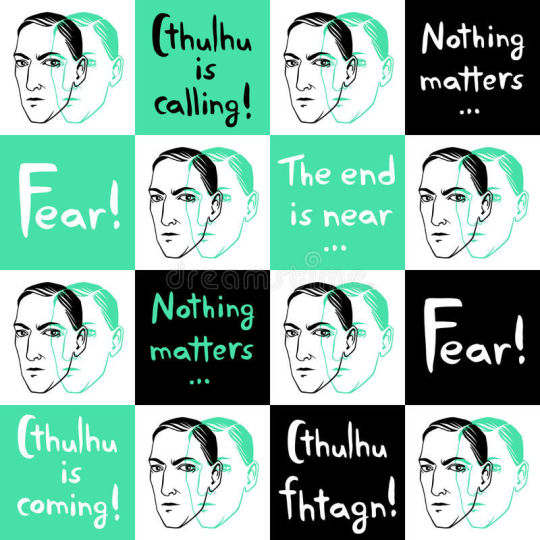
Chapitre 3: l’origine de l’horreur lovecraftienne
L’origine du Necronomicon
Il est maintenant temps de livrer une dernière précision en ce qui concerne le Necronomicon. Si l’on rejoint le point devue d’Howard Phillips Lovecraft, il ne s’agit que d’une vaste blague[1]. Bien que, cela traduise chez lui, une certainecuriosité pour l’ésotérisme. Il lit de manière assidue les anthropologues en vogue ayant un fort intérêt pour : « (…) lamagie, « …) la sorcellerie et (…) la démonologie (…)[2] » tels que Sir James Frazer : The Golden Bough (1890),Margaret Murray : The Witch-Cult in Western Europe (1921) et Arthur Edward Waite : The Book of Black Magic and ofPacts (1898)[3]. Ce dernier a sans doute une grande importance dans la construction du récit du Necronomicon. En effet,Arthur Edward Waite a consacré une bonne partie de son ouvrage à La Clef de Salomon[4]. D’après Jean Marigny,Lovecraft a une -profonde connaissance de ces grimoires. Il s’intéresse également aux publications d’AleisterCrowley[5]notamment : « les documents concernant la Golden Dawn publiés dans la revue The Equinox par AleisterCrowley (…)[6]»
Ce sont donc ces lectures qui ont permis à Howard Phillips Lovecraft de s’inspirer de l’univers de l’occultisme et del’ésotérisme afin de créer son propre grimoire fictif attirant toute notre attention dans la première partie de ce travail[7].Dorénavant, il nous semble pertinent d’ouvrir plus largement nos perspectives en analysant les récits lovecraftiens dansleur globalité :
De l’exploration réelle à l’exploration imaginaire
Selon Lauric Guillaud, il est pertinent de s’intéresser de près aux journaux d’exploration réels, notamment ceux de Lewiset Clark. Malgré le fait que ces journaux soient, en théorie, considérés comme étant des documentaires réalistes, il y adans ces récits quelque chose d’indéniablement imaginaire ouvrant la voie à la création d’un mythe[8].
« Le capitaine Meriwether Lewis, intellectuel porté à la mélancolie, est chargé de diriger l’expédition. Quand il part, sonimage de l’Ouest est largement modelée par ses lectures scientifiques et surtout par son esprit imaginatif. Mais avant deconquérir l’Ouest, il faut l’écrire. Au début, Lewis se sent dans le jardin du paradis. Mais, peu à peu, le paysage change ;la Prairie illimitée suscite fascination et inquiétude. Les comptes rendus attestent une sorte de contamination générée parle genius loci, « l’esprit du lieu ». Le paysage devient insondable, labyrinthique même. (…) Lewis, progressivement sidérépar ce qui relève du wild (bewildered), est confronté à un décor énigmatique qu’il s’agit de déchiffrer. (…)L’enthousiasme d’être le premier[9]. »
Et, à l’instar de certains principaux protagonistes des nouvelles lovecraftiennes se sentir attiré par :
« ces régions du nord-ouest que l’homme n’avait jamais arpentées ni même pénétrées par l’imagination[10]».
L’étrangeté de la nature
Nous trouvons chez Lewis, Poe, Verne et Lovecraft, de nombreux points communs notamment en ce qui concerneles curiosités se trouvant dans la nature. Le Julius Rodman de Poe s’interroge : les monticules qu’il aperçoit sont-ellesnaturelles ou ont-elles été construites par la main de l’homme ?[11] Lewis, lui, est totalement tétanisé devant ce quisemble être une : « « barrière » neigeuse qui fait obstacle au rêve, préfigurant (…) la « barrière » titanesque deLovecraft[12] ». En outre, la pensée que la nature est en réalité contre-nature est bien présente chez les quatreauteurs[13]. Ils sont hantés par l’idée sombre et macabre de découvrir : « la miraculeuse étrangeté du récitimpossible[14] ». La soif de l’inconnu amène, sans cesse, les protagonistes à ce point de non-retour qui est la folie ou lamort, parfois les deux Jules Vernes, écrivain pessimiste à la fin de sa vie, écrit Le Sphinx des glaces (1897) faisantfortement allusion à l’Arthur Gordon Pym de Poe (1838). Dans ce roman de Jules Verne, la représentation du pôle-sudest particulièrement macabre. En effet, entre les pattes d’un mystérieux sphinx se trouve :
« (…) un squelette revêtu de peau, que le froid de ces régions avait conservé intact, et qui gardait une rigiditécadavérique[15]. »
Alchimiste de l’horreur
Lovecraft s’est fortement inspiré du genre exploratoire afin de créer un genre tout à fait inédit. Un genre littéraireextrêmement noir mêlant horreur poesque et science-fiction : « lyrisme et mysticisme sont évacués au profit d’unestratégie de décomposition et de recomposition qui subvertit tout positivisme, toute rationalité. Ce qui n’est que suggéréchez Verne se mue en véritable obscénité. Fidèle à l’esprit poesque, Lovecraft se plaît à outrer, à surcharger, à transgresser(…)[16] ». Dans Les Montagnes Hallucinées (1936), l’écrivain utilise des termes scientifiques, nomme de manière préciseles explorateurs, fait explicitement allusion à des théories scientifiques contemporaines de son époque. Il mêle la parolescientifique à l’horreur et à l’extraordinaire créant une certaine confusion chez le lecteur. En effet, le professeur WilliamDyer, principal protagoniste du récit remet ses convictions scientifiques en question :
« (…) nous étions prêts à croire, et à taire, nombre d’épouvantables et incroyables secrets de la Nature primitive[17]. »
Et plus loin :
« (…) nous ne pouvions plus douter qu’une horreur indicible- actuelle, ou en tous cas récente- nous attendait droitdevant[18]. »
La découverte soudaine de la race des Grands Anciens mène inéluctablement les scientifiques à la folie. Il y a, chezLovecraft, un caractère apocalyptique que l’on ne retrouve pas chez les précédents auteurs. Les créatures lovecraftiennesannoncent la fin du monde[19]. Néanmoins, peut-on, de ce fait, prétendre que Lovecraft, en écrivant ses récitsapocalyptiques, se définit lui-même comme étant une sorte de prophète annonçant la fin du monde ?
Lovecraft et les théosophes : un lien ambigu.
« Les élucubrations des théosophes qui tombent dans la catégorie de la tromperie délibérée présentent, ici et là, quelqueintérêt[20]. »
Il est vrai, et lui-même ne le nie pas qu’il s’inspire fortement de publications et autres œuvres ésotériques. Par exemple,dans Les montagnes hallucinées, il y a de nombreuses récurrences faites à l’artiste peintre Roerich[21]. Visiblement,l’atmosphère froide, mystérieuse, spectrale qui a influencé Lovecraft. Il semble également que l’architecture siparticulière que l’on trouve dans les nouvelles de l’écrivain ait une inspiration d’origine roerichienne. Il avoue mêmeavoir une certaine fascination pour ces peintures notamment, The Doomed city (1914), Burning of Darkness (1924) etPower of the Caves (1925)[22].
De là, jusqu’à en déduire que Lovecraft s’est baigné dans les eaux occultes tels que celle de la théosophie, il y a ungouffre. En effet, il est évident que l’intérêt qu’il manifeste pour l’ésotérisme reste tout bonnement d’ordre artistique etnon de croyances personnelles[23] :
Figure 5 Burning of Darkness (1924)[26]
Figure 6 Power of the Cave (1925)[27]
Par ailleurs, si l’on compare de près l’œuvre de Lovecraft avec les textes théosophiques, notamment ceux de MmeBlavatsky, on se rend vite compte que leurs visons sont diamètralement opposées l’une de l’autre. En effet, selon HelenaBlavatsky, l’homme se dirige vers un « éveil spirituel » guidé par les « maîtres mystiques[28] ». A contrario, dans l’œuvrede Lovecraft, l’homme est voué à la destruction par des races inter-galactiques. En outre, le thème de la dégénérescencehumaine revient de manière récurrente chez Lovecraft alors que Mme Blavatsky a tendance à croire en la suprématie del’homme (aryen)[29]. De ce fait, si Lovecraft s’est inspiré des mouvements ésotériques, il s’agit davantage d’uneinclinaison tendant à parodier voire détourner de manière humoristique le domaine du surnaturel et de l’ésotérisme.[30].
[1] Jean Marigny, op.cit., p.295. [2]Ibidem. [3] Ibid. [4] Clef de Salomon davantage connue sous le nom de Clavicule de Salomon désigne un ensemble de grimoires appartenant prétendument à Salomon. [5] Aleister Crowley (1875-1947) est un écrivain versant fortement dans l’occultisme. [6] Jean Marigny, op.cit., p.295. [7] Ibidem, p.296. [8] Lauric Guillaud,op.cit., pp.52-53. [9] Ibidem, p.53. [10] H.P. Lovecraft, Les montagnes hallucinées, in Lauric Guillaud, « Les arrières-fables textuelles et picturales… » op.cit., p.53. [11] Ibidem, p.54. [12] Lauric Guillaud, op.cit., p.54. [13] Ibidem, p.55. [14] Michel Foucault, in Lauric Guilllaud, op.cit., p.57. [15] Jules Verne, in Lauric Guillaud, op.cit., p.59. [16] Lauric Guillaud, op.cit., p.60. [17] H.P. Lovecraft, Les Montagnes Hallucinées, in Lauric Guillaud, op.cit., p.64. [18] Ibid. [19] Ibid. . [20] Lettre à Willis Conover in Gilles Menegaldo, « Méta-discours ésotérique au service du fantastique » in H.P. Lovecraft, fantastique, mythe et modernité, colloque de Cerisy (dir. G. Menegaldo), Paris, 2002, p.269. [21] Nicolas Roerich est un peintre russe versant dans la théosophie. Il a également exercé en tant qu’orientaliste, archéologue, et philosophe. [22]Lauric Guillaud, op.cit., p.65. [23] Gilles Menegaldo, «Méta-disours ésotérique au service du fantastiq ue », in H.P. Lovecraft, fantastique, mythe et modernité, colloque de Cerisy (dir. G. Menegaldo), Paris, 2002, p.268. [24] Lettre à C.A Smith, op.cit., p.269 . [25] https://www.wikiart.org/en/nicholas-roerich/the-doomed-city-1914. [26] https://www.wikiart.org/en/nicholas-roerich/burning-the-darkness-1924 [27] https://arthistoryproject.com/artists/nicholas-roerich/power-of-the-caves/. [28] Gilles Menegaldo, op.cit., p.268. [29] Ibid. [30] Ibidem, p.276.
1 note
·
View note
Text
"L’universo al confine della paura: la vita e le opere di H.P. Lovecraft (una piccola guida)" di Stefano Donno

L’universo al confine della paura: la vita e le opere di H.P. Lovecraft (una piccola guida) di Stefano Donno. “Non vi è un solo narratore di horror, fantascienza, weird, soprannaturale, grottesco – sia contemporaneo che successivo a H.P. Lovecraft – che non si sia ad egli ispirato: nomi tra i quali si annoverano Stephen King, George R.R. Martin, Robert McCammon e Joyce Carol Oates devono, alla loro letteratura, la forte ispirazione ricevuta da Howard Philipp Lovecraft, maestro comune che oggi è e resta immortale, tra i più amati e letti di tutti i tempi. (dalla prefazione di Antonia Depalma) (…) Basti pensare che il già citato Necronomicon, pur essendo dichia- ratamente il frutto dell'ingegno del suo autore, si è trasformato in un vero e proprio grimorio contenente oscuri segreti e indecifrabili misteri per moltissimi studiosi, tanto che in diverse occasioni sono nate leggende direttamente collegate ad esso. (dalla post fazione di Mario Contino)" Dichiara l’autore Stefano Donno: “Ho l’esigenza (mi rivolgo ai potenziali lettori di questo scritto, questa piccola guida) di condividere con voi un pensiero inquietante che mi ha travolto mentre scrivevo questa monografia su H.P. Lovecraft. Mentre mi immergevo nelle profonde e oscure pieghe della mente di questo genio del terrore, mi sono reso conto che la mia interpretazione potrebbe essere solo una delle tante varianti di infinite versioni provenienti da multiversi che pullulano di abominii e orrori dominanti. Lovecraft è noto per i suoi racconti di antichi dei primordiali, dimensioni oscure e creature sovraumane che superano di gran lunga la comprensione umana. Eppure, dopo mesi di studio, ho sempre più presente in me stesso la convinzione che ogni cosa qui riportata, potrebbe essere solo un tenue barbaglio nella vastità delle possibilità narrative lovecraftiane. Il mio cuore trema all'idea che esistano mondi in cui la depravazione e l'orrore regnano sovrani, in cui ciò che noi consideriamo normale è devastato e sovvertito, e dove la paura diventa la sola costante di ogni cosa che esiste. Potrebbe esserci un universo in cui le storie di Lovecraft sono state superate, in cui gli orrori descritti nei suoi racconti sembrano tenere narrazioni rispetto agli orrori che altre realtà offrono nell’oscurità. Questa piccola monografia che ho scritto si basa sulla lettura di racconti e analisi delle tematiche ricorrenti nella narrativa lovecraftiana. Ma che cosa potrebbe significare tutto ciò se ogni ricerca, ogni spiegazione e ogni interpretazione fosse solo un ulteriore apertura verso nuovi abissi di paura? Mentre concedete dunque la vostra attenzione alle parole che ho scritto, tenete a mente che queste parole potrebbero essere solo irrisorie rispetto alla vastità di un orrore cosmico e abominevole. Ciò che troverete in queste pagine potrebbe sembrare terribilmente familiare, oppure potrebbe essere solo l'inizio di un viaggio sinistro nelle varianti più estreme della follia. E con questa consapevolezza, vi invito a guardare ben oltre le pagine dei miei scritti, e fare in modo che ogni traccia di normalità svanisca nel buio. Solo allora, potrete sperare di catturare un fugace sguardo di ciò che si cela al di là dei confini del nostro universo. A volte mi assale il dubbio che quanto da me scritto sia in realtà la voce di qualcos’altro”. Howard Phillips Lovecraft, meglio conosciuto come H.P. Lovecraft, è uno degli scrittori più influenti e controversi del ventesimo secolo. Nato nel 1890 a Providence, Rhode Island, Lovecraft ha creato un'impressionante e unica mitologia letteraria che ha continuato ad affascinare e spaventare i lettori di tutto il mondo. Uomo dalla vita sociale limitata, ha preferito l'isolamento e la lettura, che alimentarono ulteriormente la sua immaginazione oscura. La sua scrittura era caratterizzata da un linguaggio ricercato, una prosa elaborata e un utilizzo di descrizioni dettagliate, rimanendo fedele allo stile gotico vittoriano. Le sue storie si concentravano sul tema dell'orrore cosmico, in cui i protagonisti si scontrano con forze soverchianti di creature ancestrali e degli dèi antichi che minacciano l'esistenza umana. L'opera più celebre di Lovecraft è probabilmente il "Mito di Cthulhu". Questo ciclo di racconti si basa su una mitologia inventata da Lovecraft, in cui antichi dei primordiali, come Cthulhu, dormono nelle profondità abissali del mare e nei recessi dello spazio, pronti a risvegliarsi per reclamare il dominio sulla Terra. Lovecraft è stato trascurato dalla critica mentre era in vita, ma dopo la sua morte nel 1937, il suo lavoro ha conosciuto un revival significativo. Scrittori come Stephen King, Neil Gaiman e Guillermo del Toro hanno dichiarato pubblicamente l'influenza di Lovecraft nelle loro opere. Il suo stile unico e la sua capacità di far emergere paure innominate lo rendono un maestro dell'horror. Il Nostro ha inoltre ispirato numerose opere in altri media, come film, videogiochi e musica. Gli adattamenti cinematografici dei suoi racconti, come "Re-Animator" e "Dagon", hanno continuato a creare nuovi fan dell'orrore lovecraftiano. Nonostante la sua vita oscura e la morte prematura, H.P. Lovecraft ha lasciato un'impronta indelebile nel panorama letterario dell'horror.... #notizie #news #breakingnews #cronaca #politica #eventi #sport #moda Read the full article
0 notes
Text
The Gargoyles in Roanapur
Disclaimer:I don’t own any of the charachters in my Fanfiction.They belong to their creators.Black Lagoon belongs to mangaka Hiroe Rei,the animated series “Gargoyles” to Disney Pictures,the Cthulhu mythos to Howard Phillips Lovecraft.
I conceived it,I wrote it,medievalotaku did the editing for grammar,punctuation and clarity.I’m so Grateful to Him:)
Support me with a Donation,to see a Better one(oc):
“ Shortly after “El Baile De La Muerte,” Rock is depressed, in agony and questions who he really is. At the same time, Xanatos is there. He’s plotting to obtain an ancient grimoire: The Necronomicon (H.P.Lovecraft reference!) to augment the strength of his Steel Clan. The Gargoyles learned of this plan and came on his trail. Utilizing the spells they were taught by Tom the Guardian, they made their quick, safe entry into Roanapur, Thailand. And began flying over Roanapur to learn what kind of place it is. They might have continued concealing themselves from any curious eyes and ears; but Goliath, in order to defend a lonely old woman, took on some Colombian thugs. They were about to torture her grandson--just for the pleasure of it.
One of them gets away, he’s scared to death and screaming about a monster!
“SAVE ME FROM THE MONSTER!!”
“Was it Roberta?”.
“No Abrego,it wasn’t Roberta! It was a POWERFUL MONSTER! Three meters tall, with dragon-like wings on its shoulders and it’s eyes were full of fire!!”
But no one believes him. Yet, the rumors,about a superhuman monster prowling at night,became more widespread throughout Roanapur. Every cartel boss hears about this, and they don't believe it:
“So, who cares about a stupid rumor?! There’s no such monster in this world--in our city. And even if it were, we would kill it off.”
Soon afterwards, gunmen attack Rowan’s Show. The muscle guy Sam Park took four girls as his hostages. So the mercenaries felt real confident they would make it. Suddenly, an immense, wild roar is heard. Goliath, Hudson and Brooklyn entered and bested the scared thugs, thus saving the girls .
Goliath easily knocked down Sam Park. The Gargoyles swiftly fled way, and then the policemen came.
“Yes, Chief Watsap, the Gargoyles dealt with the terrorists, especially their leader, who defeated the brutes and saved all of us,” Joanna testiefied to the Police Chief.
The news spread through Roanapur. Soon Mr. Chang, the local leader of the Triads, heard about this. Plus, amateur artists made drawings of the Gargoyles. Many saw them--the Lagoon Company and Eda too.
And then came the escalation. Because the gods had noticed the moves and intentions of Xanatos, Zeus and Athena came in a meeting with their counterparts: Hastur, Fokalor and Yog Sothoth.
“The baleful knowledge in Necronomicon is about the construction of the weapons we used during the Clash of the Titans. Now, an entire network of plunderers comes to usurp it...not reckoning what kind of fire are about to play with!” So Zeus said.
“We agree,” Hastur, Fokalor and Yog Sothoth told him. “And how will we stop them?”
“Hastur, you’ve said that you’d deploy a human for such cases,” Zeus told him.
“Certainly! It just needs my old ones on his good side. They would not reappear on the surface for petty reasons.”
“Very well, Menes will awake with all the acolytes and soldiers for such a venture,” Zeus and Athena concluded.
“Thanks for your generous offer,” Hastur remarked. So he turned and said: “Fokalor, go to Earth and notify your protégées, the Gargoyles and the Ghouls, about our will. You, Yog Sothoth, find Menes and wake up his genuine memories so he will march for the cause. He’s been dormant: now he is to awake.”
Then swiftly Fokalor journeyed to earth and talked to his protégées. Sekhmet talked to her protégées too:The Liondsweh, namely, the Lion men, who were hidden for many millennia and now dwell in caverns,away from the human perception. Now, it was their time to resurface and join in the risk.
And we hear: “Y’AI’NG’NG AH YOG-SOTHOTH H’EE-L’GEB F’AI THRODOG UAAAH!”
Yog Sothoth found Rokuro “Rock” Okajima and dispersed his fake memories,and wakened his True ones: that actually he’s the Sumerian magical fighter Menes and the kin of the hero Gilgamesh! He had been born in prehistoric Iraq in 3099 B.C. The priesthood of Ur was saved from certain assassination,thanks to the time portal, and he traveled into the future. Once he arrived, he was disguised as a ordinary Japanese young man of the mid 90’s--even with a forged past,so no one would ever question who he really was”.
Here it stops.Cause I’m inclined to create a Story,with Original Characters(oc).If you like see the Story(with oc)done and finished just support it,hit the Donation Button,leave one. A Donation
https://medievalotaku.wordpress.com/
#Fanfic#Black Lagoon manga#Black Lagoon characters#Hiroe Rei#Disney's Gargoyles#Black Lagoon Roanapur#Howard Phillips Lovecraft#Howard Phillips Lovecraft Necronomicon#Cthulhu Mythos#Cthulhu Mythos Hastur#Cthulhu Mythos Yog Sothoth#Ancient Greek Gods#Ancient Zeus#Goddess Athena#Fokalor#Lionmen#Lionmen of Moav#Goddess Sekhmet#Hero Gilgamesh#Prehistoric Iraq#Time Travel#Time Portal#Black Lagoon Rock#Black Lagoon Okajima Rokuro#Liondsweh#Priesthood of Ur#adventure#drama#supernatural#occult
2 notes
·
View notes
Text
« Mi sono chiesto più volte se la maggior parte della gente si soffermi a riflettere sul significato dei sogni, che a volte è clamoroso e comunque appartiene a un mondo di oscurità e mistero. »
— Il Necronomicon, Abdul Alhazred.
#necronomicon#quotes#citazioni#i racconti delle leggi dei morti#italian quotes#citazioni italiane#reblog and have fun!~#howard phillips lovecraft#abdul alhazred#frasi sogni#when we all fall asleep where do we go
9 notes
·
View notes
Photo

#chthulhu#HP Lovecraft#h.p. lovecraft#howard phillips lovecraft#necronomicon#abdul alhazred#necronomicon couplet#the necronomicon#cosmic horror#gothic#gothic aesthetic#gothic quotes
128 notes
·
View notes
Text
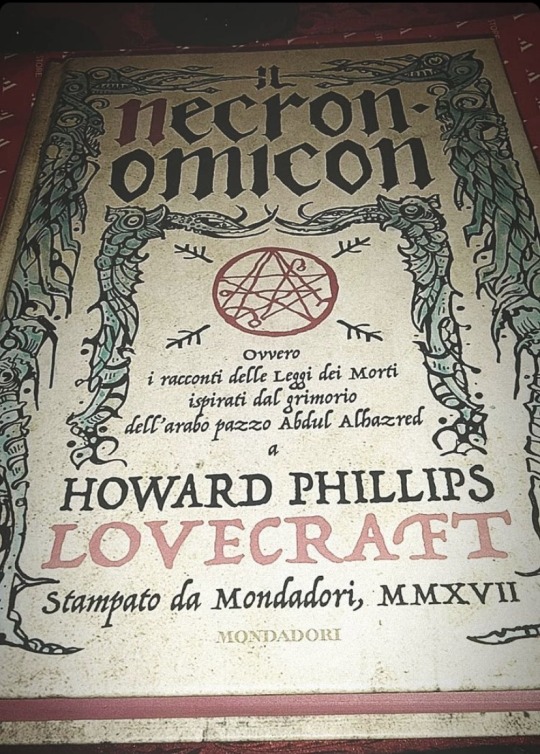
New book grimoire
#no more#darkaimaa#darkaima#necronomicon#howard phillips lovecraft#satan eternal#satan aesthetic#goth aesthetic#pagan aesthetic#dark#darkness#empty soul#grimorio#grimoire
96 notes
·
View notes